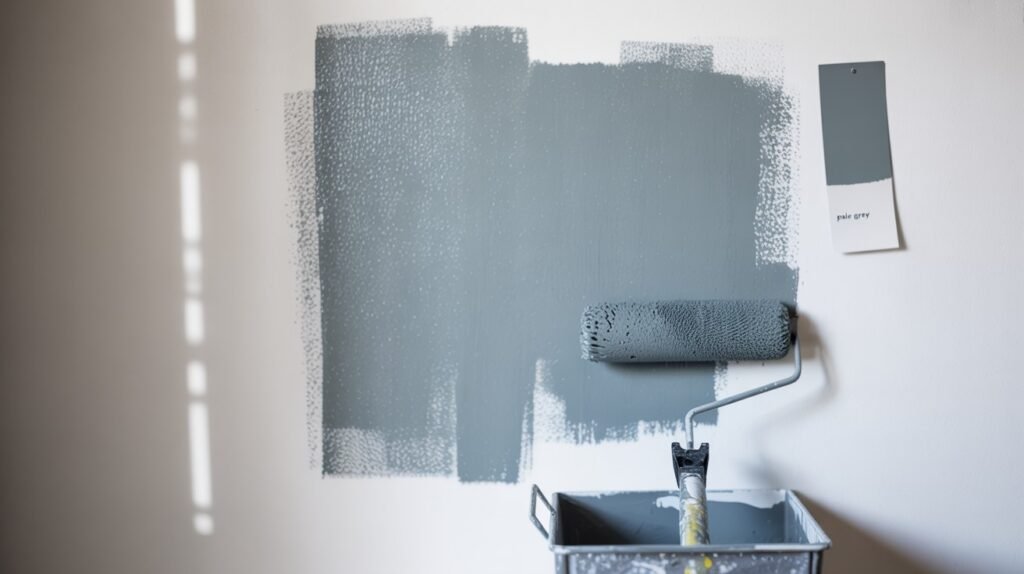Have you ever painted a wall and wondered if your eyes were playing tricks on you?
One minute, your freshly applied paint looks perfect, and the next, it seems like a completely different shade.
You’re not going crazy this color-shifting phenomenon happens to everyone, from first-time DIYers to seasoned professionals.
The question “Does paint dry darker or lighter?” is one of the most common concerns homeowners face during painting projects.
The answer isn’t as straightforward as you might think, and understanding why this happens can save you from costly repainting mistakes.
Most people assume paint will look exactly like it does when wet, leading to disappointment and confusion when the final result differs from expectations.
His uncertainty can turn an exciting home improvement project into a stressful guessing game, especially when you’re working with expensive paint or covering large areas.
By understanding the science behind paint drying and color changes, you’ll confidently choose colors and predict final results every time.
Does Paint Dry Darker or Lighter? The Truth
Here’s the straightforward answer: most paints dry slightly darker than they appear when wet.
This happens because wet paint reflects more light due to its glossy, liquid surface, making colors appear brighter and lighter.
As the paint dries and loses its shine, less light bounces back to your eyes, creating a deeper, more muted appearance.
But there are important exceptions to this rule:
Flat paints often maintain their wet appearance or may even look slightly lighter when dry. Since flat finishes have minimal reflective properties to begin with, the drying process creates less dramatic visual change.
The matte surface absorbs light consistently, whether wet or dry.
Very light colors- think whites, pale yellows, and soft pastels – frequently appear unchanged or marginally lighter after drying.
These colors contain high concentrations of titanium dioxide (white pigment), which maintains its opacity and brightness throughout the drying process.
Lighting plays a crucial role in color perception. The same dried paint can look completely different under morning sunlight versus evening lamplight.
Natural light reveals true colors, while artificial lighting can add warm or cool tints that alter your perception.
This is why paint samples can look perfect in the store but disappointing on your walls at home.
Understanding these principles helps you make informed color choices and set realistic expectations for your painting projects.
Factors That Influence Color Change
Type of Paint (Latex vs. Oil-based)
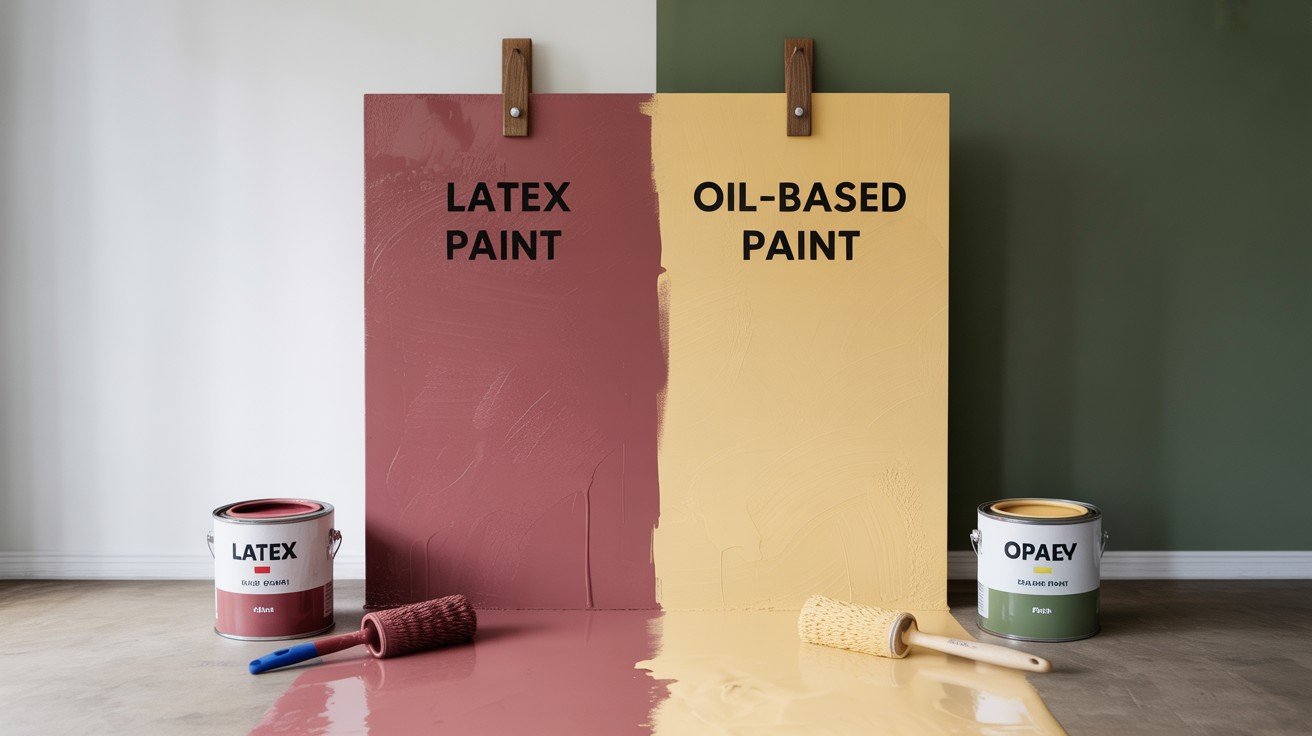
Latex paints typically show more noticeable color shifts because they dry faster and form a film on the surface. Oil-based paints dry more slowly and penetrate deeper, resulting in less dramatic color changes between wet and dry states.
Finish/Sheen (Flat, eggshell, satin, gloss)
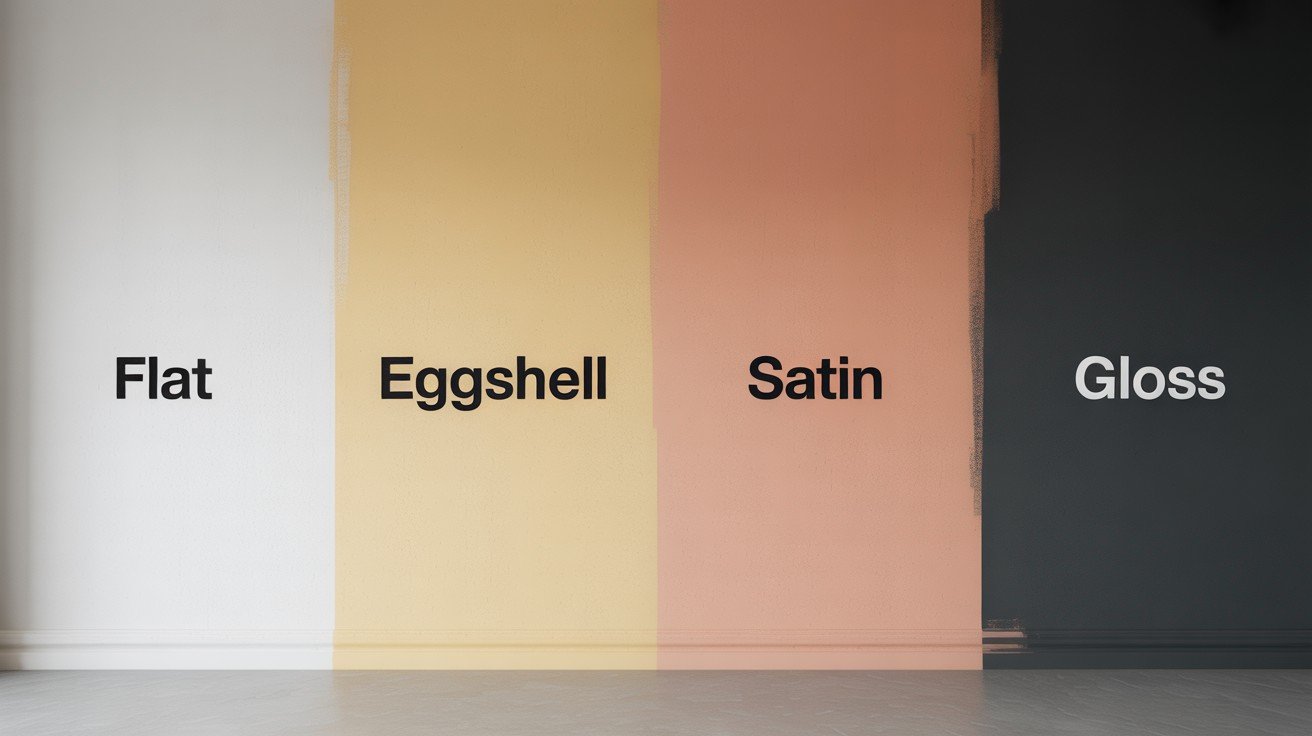
Higher sheen levels reflect more light when wet, creating a greater contrast once dried and matte. Glossy finishes show the most dramatic darkening effect, while flat finishes maintain relatively consistent color throughout the drying process.
Surface Texture & Priming
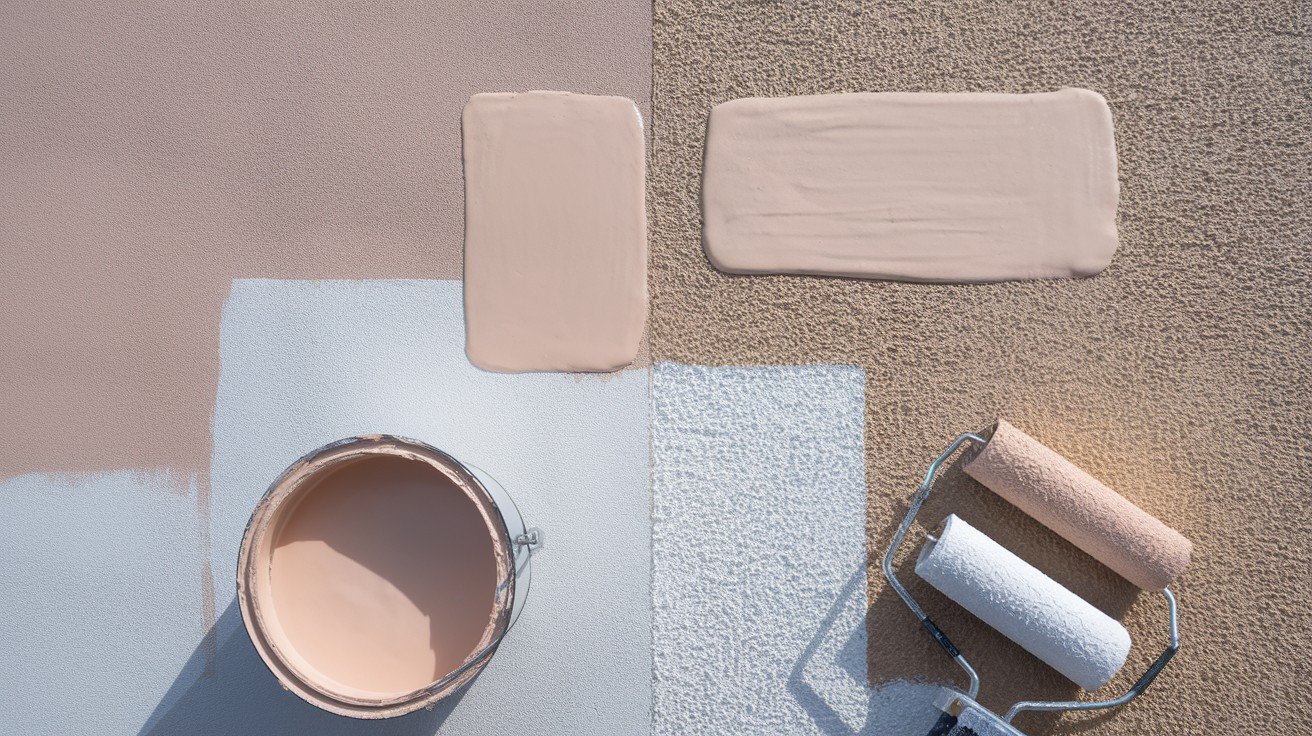
Textured surfaces scatter light differently than smooth ones, affecting how color appears after drying. Proper priming creates uniform absorption, preventing uneven color development that can make some areas appear lighter or darker than others.
Number of Coats
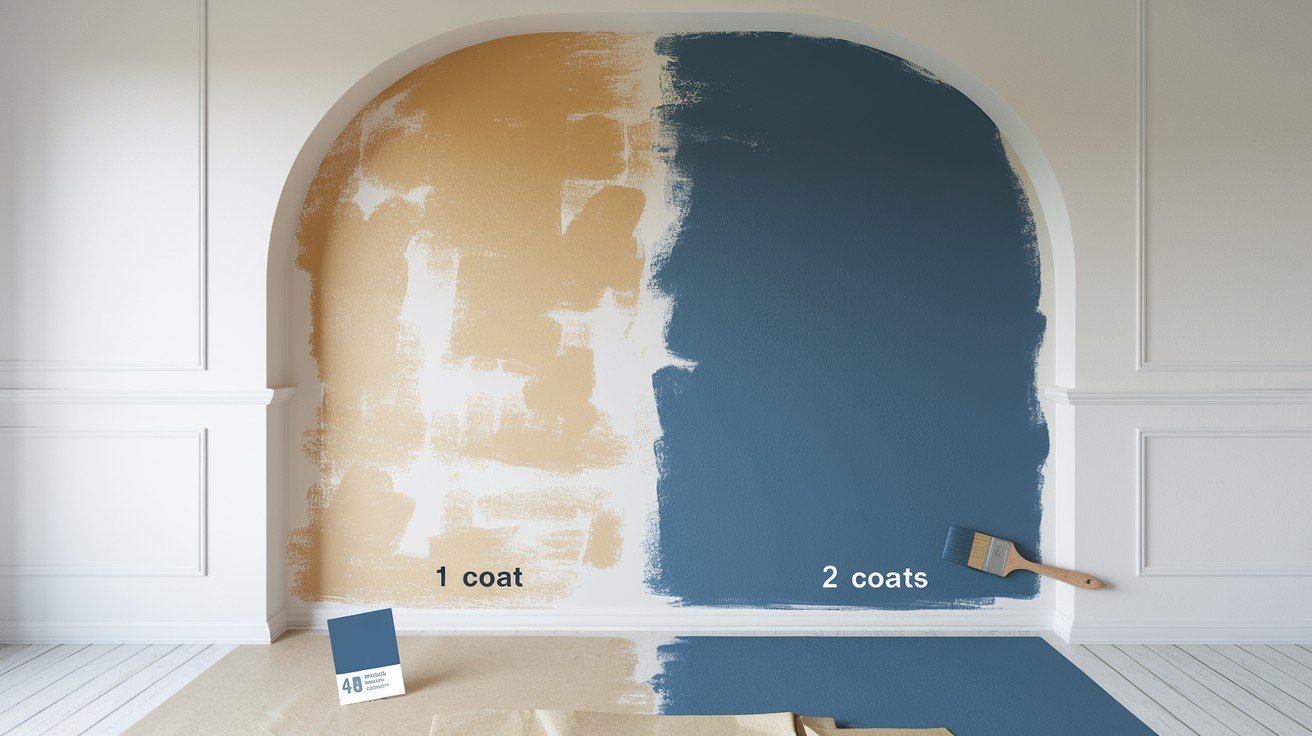
Single coats often dry lighter because the underlying surface shows through, diluting the color intensity. Multiple coats build opacity and depth, typically resulting in richer, darker final colors that match your expectations better.
How to Accurately Predict Final Paint Color?
Testing paint samples is your best defense against color surprises. Create sample boards using the actual paint you’ll purchase paint swatches from stores often don’t match perfectly.
Apply two full coats to your sample and let it cure for at least 24-48 hours before making final decisions.
View your samples under different lighting conditions throughout the day. Colors that look perfect under bright morning sun might appear completely different under evening lamps or cloudy afternoon light.
Test samples in the actual room where you’ll be painting, observing them at various times to ensure you’re happy with the color in all lighting situations.
Does Paint Get Darker With a Second Coat?
Yes, and I learned this the hard way. My first painting project left me staring at walls that looked nothing like my paint chip.
Here’s what I found: your first coat soaks into the surface like a sponge. The second coat sits on top and doesn’t absorb as much. This creates the real color depth you’re after.
I’ve painted dozens of rooms now, and colors typically get 10-15% darker with that second coat. My pale blue nursery turned into a beautiful sky blue. My “soft gray” living room became the rich charcoal I wanted.
Here’s something that surprised me: adding a third or fourth coat barely changes anything. The magic happens between coats one and two.
I made the mistake of judging colors after just one coat for years. Now I always test with two full coats and wait 24 hours before making any decisions.
My advice: expect this change and plan for it. Most paint companies design their colors assuming you’ll use two coats. That gorgeous color on your paint chip? It’s showing you the two-coat result.
Will Paint Colour Change Over Time?
Yes, and I’ve watched it happen in my own home. My bright red accent wall slowly turned pink over three years, thanks to afternoon sunlight streaming through my south-facing window.
Sunlight is the biggest enemy. UV rays break down paint pigments just like they fade your favorite shirt. I learned this the hard way when my vibrant kitchen walls started looking washed out.
Different colors age differently. Reds fade fastest – I’ve seen them turn pink or orange. Blues hold up well my navy bedroom still looks perfect after five years. Whites yellow over time, especially in humid rooms.
Most changes happen gradually over 2-5 years. South-facing walls show the most fading because they get the strongest sunlight.
I’ve learned to expect some color evolution. Sometimes the aged color looks better. My once-bright turquoise bathroom has mellowed into a perfect seafoam green that I love even more. Keep some leftover paint for touch-ups every few years.
Tips for Ensuring You Choose the Right Shade
I’ve learned these testing methods through years of painting mistakes – use them to get your perfect color every time.
- I used to trust those tiny paint chips. Big mistake. Now I buy sample sizes and paint 12×12-inch swatches on poster board. Apply two full coats – I promise one coat will fool you every time.
- Here’s what I wish someone had told me earlier: paint your samples directly on your wall. I’ve seen the same color look completely different on opposite walls in my living room. Light exposure changes everything.
- I cannot stress this enough – never choose colors immediately. I once picked a “perfect” beige at 2 PM that looked like baby food under my evening lamps. Now I live with samples for at least 24 hours and check them morning, noon, and night.
- My north-facing bedroom taught me this lesson the hard way. Colors always look cooler and darker there. If your room faces south, you’ll get warmer tones. Trust me on this – limited natural light makes every color more muted when dry.
- I hold every sample next to pure white paper now. You wouldn’t believe how many “gray” paints I’ve seen turn purple or green once dried. This simple trick has saved me from so many repainting disasters.
- I learned this after painting my kitchen. The same color looked different near my window versus the corner by my pantry. Now I test the same shade in at least three spots around any room I’m painting.
- If something feels off about a color, listen to that voice. I’ve ignored my instincts before and regretted it for months. You’ll see this color every single day – if you’re not completely in love with your sample, keep looking.
My bottom line: I’ve wasted more money rushing into paint purchases than I ever spent on samples. Take your time, test thoroughly, and save yourself the headache of repainting.
Conclusion
Understanding how paint changes as it dries can upgrade your painting experience from guesswork into confident decision-making.
Remember that most paints dry slightly darker, but exceptions exist for flat finishes and very light colors. The key to success lies in proper testing always create sample boards with your chosen paint, apply multiple coats, and observe them under different lighting conditions.
Don’t rush the process. Allow samples to fully cure before making final color selections, and consider how factors like surface texture, application method, and environmental conditions might affect your results.
By taking these steps, you’ll avoid costly mistakes and achieve the beautiful, consistent color you envisioned for your space.
Smart preparation and realistic expectations will make your next painting project both successful and enjoyable.
Frequently Asked Questions
How long should I wait to judge paint color after application?
Wait at least 24-48 hours for paint to fully cure before making final color judgments.
Do all paint brands dry the same way?
No, different brands and formulations can dry with varying degrees of color change.
Can primer affect how paint color appears when dry?
Yes, primer color and quality significantly impact final paint appearance and uniformity.

